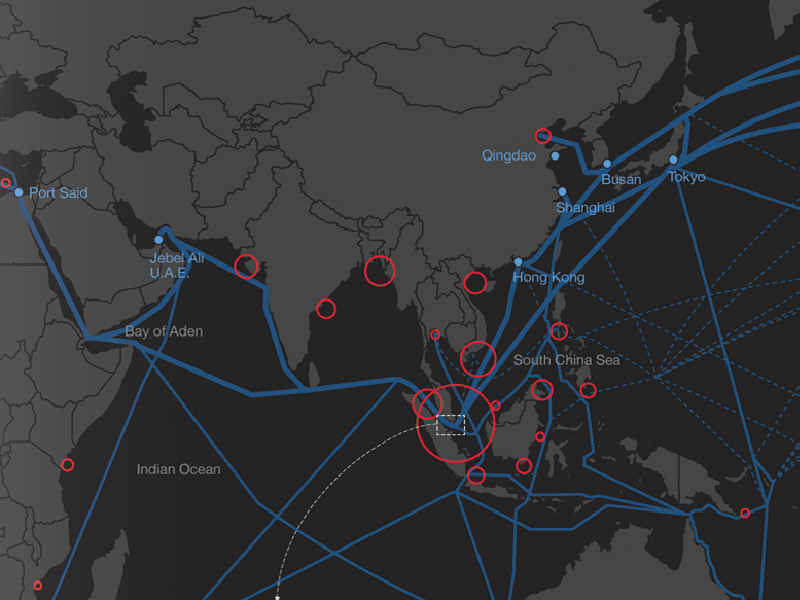
A geographical indication tag, or GI Tag for short, is a type of intellectual property that identifies products as coming from a certain country, region, or place where a certain quality, reputation, or other trait is present. Many other traits may mostly be attributed to their place of origin. By market distinction, GI safeguards intangible economic assets like a product’s qualities and reputation.
Without research or personal experience, buyers often have a hard time judging the quality of a product on the market, and they usually don’t know much about the good things about the product. Still, the people who make the product know everything there is to know about its features and quality compared to other products on the market. The ‘natural chaos’ is the outcome of uneven information. When certain producers take advantage of this information asymmetry, they may be motivated to supply lower-quality items, exactly because customers frequently lack comprehensive knowledge, which has a detrimental influence on the market or consumers’ purchasing decisions.
Also, it has been confirmed that buyers are willing to spend more money on GI-tagged items. Consumers are willing to pay a premium for GI-certified agricultural goods, according to studies conducted by the United Nations Conference on Trade and Development (UNCTAD). Customers are also willing to pay an additional premium for non-agricultural items; 5% to 10% is typical.
International Protection for GI Tag
The Trade-Related Aspects of Intellectual Property Rights lays forth baseline protection requirements that WTO members must adhere to in their national legislation on a global scale. Yet, there is a hierarchy issue about the extent of GI protection under TRIPS. This is because TRIPS mandates a two-level system of protection:
- the basic protection applicable to all GI generally (under Article 22);
- Additional protection applies only to GI-designating wines and spirits. This is even though TRIPS contains a single, identical definition for all GI, regardless of product categories (under Article 23).
GI Tag in India

India has established a sui generis system of GI protection through the adoption of legislation devoted solely to the protection of GIs. The Geographical Indications of Goods (Registration and Protection) Act, 1999, and the Geographical Indications of Goods (Registration and Protection) Regulations, 2002 are the laws that deal with protecting GIs in India (GI Rules). In order to fulfill its duties under TRIPS, India passed its GI legislation, allowing the nation to implement national intellectual property laws. The Geographical Indications Registry, with all-India jurisdiction, has been formed by the central government in Chennai under the authority of the GI Act, which came into effect together with the GI Regulations on September 15, 2003. Here is where right-holders may register their GI.
The GI Act does not limit itself to wines and spirits, in contrast to TRIPS. Instead, the choice of whether goods should get higher degrees of protection has been left up to the central government. The Indian Act’s authors chose this strategy on purpose in order to provide GIs of Indian descent with the strict protections promised by the TRIPS Agreement. But other WTO members are not required to provide all Indian goods with protection along the lines of Article 23, allowing the opportunity for their theft in the global market.
The Unsuccessful Factor
The benefits of GI are numerous, and if they are utilized properly, they can play a significant role in bolstering a region’s economy and paving the way for growth and development. GI functions as a form of insurance or protection, particularly for developing nations such as India, where producers are unable to invest in branding due to a lack of marketing skills, infrastructure, legal knowledge, etc. The GI label plays a crucial role in establishing brand value for these indigenous producers. As it has in the case of tequila manufacturers (Mexico). Tequila, the earliest GI outside of Europe, is quite influential as one of the most economically successful GIs outside of Europe.
Lack of Post Production Control in GI Tag Regime

It is important to note that Indian law does contain provisions for quality control measures. Section 11 of the legislation specifies the registration application for a GI. Section 11(1) stipulates that any association or organization of producers or persons professing to represent the producers’ interests may register the relevant products by following a specific procedure. Section 11(2) outlines the components of an application of this nature. It must include a description of how the commodity relates to a particular territory in terms of its natural and human factors and production. In addition, the respective class of products, a map of the territory, details about the product’s appearance, and the names of its producers must be included.
However, the aforementioned mechanisms for maintaining the integrity of GI-tagged products have proven ineffective. In turn, the absence of quality control creates an incentive for “free riders” within the community in question. Free-riders are members of a collective group who decide to reduce the quality of their products in order to compete with other GI producers or similar producers outside the GI-designated market, particularly when consumers are agnostic or oblivious of these distinctions.
The situation could have been improved if the law had mandated the formation of inspection bodies. These inspection agencies are essential for ensuring that manufacturers do not lower product quality. Also, in order to ensure that such requirements do not discourage impoverished communities from registering, the minimum infrastructure requirements should be kept low so long as the verification is conducted effectively.
Insufficient Scientific Vigour
It has been argued that there is a distinction between a product’s “uniqueness” and its “specialty.” Product specialization is the result of geographical factors, whereas product uniqueness may be the result of geographical and non-geographical factors in combination or solely due to non-geographical factors. To establish the uniqueness of agricultural products, a substantial amount of research is necessary. When consumers are aware of a product’s specialty, they place a greater emphasis on its uniqueness as a purchasing decision criterion. Therefore, both must be given equal weight. However, this information is reportedly missing from the majority of registered agricultural GIs in the country.
Generecide Issue of GI Tag
Even though we had to make a domestic law about GI Tags, it has been said that we shouldn’t have put in parts that could have affected us without thinking. A good example of this is Section 9 of the Act, which talks about genericide. In Section 9, there are a lot of things to think about deciding if a product has become generic. This is because we not only look at the “country of origin,” which is required by TRIPS but also at the “areas of consumption,” which is also required by TRIPS-plus.
Conclusion
The most defining characteristic of a GI is its capacity to elevate marginalized communities in society. Since it is a common right, it will effectively protect the well-being of artisans and other locals who specialize in unique products for particular regions. As a result, careful preservation of such GIs is critical in order to discourage commercial organizations that are not registered users of GI from profiting from the prestige that indigenous communities have painstakingly built up.
India has a lot of different kinds of land and a lot of different kinds of cultures. This makes it possible for India to have a lot of different kinds of native products that are unique to each region. The GI Registry has repeatedly refused to meet the minimum requirements of the GI Act, even though the purpose of the GI Act is to set up a legal framework for doing so. Since India’s legal system for protecting GIs is still young, it makes sense that the GI Registry wouldn’t want to set an overly high eligibility threshold. This would make many people decide not to even try to get a GI. But the larger goals of the scheme won’t be met if GI registrations are given to anything with a geographical name.